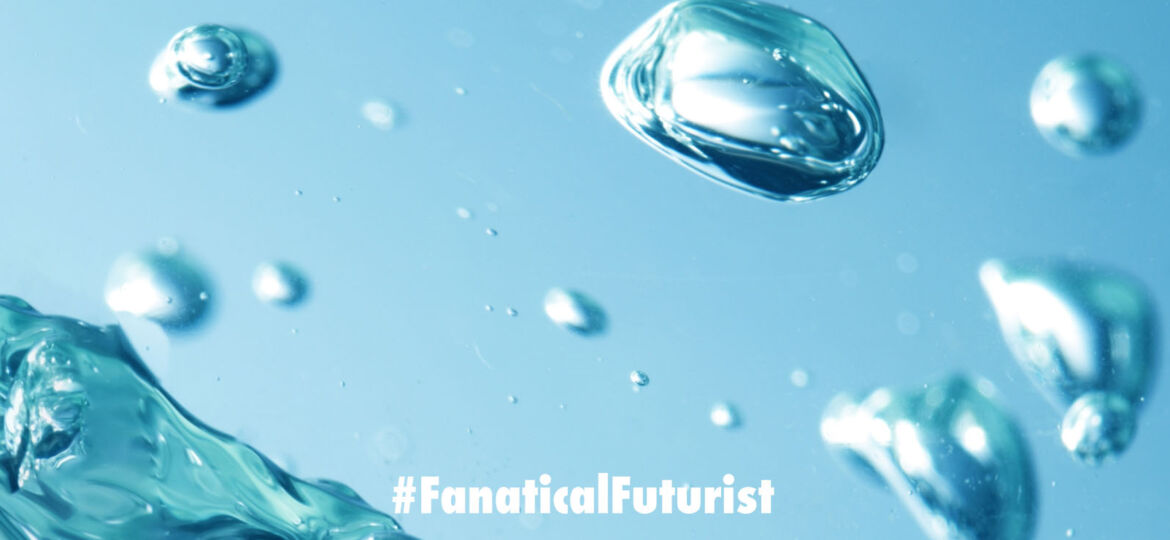
WHY THIS MATTERS IN BRIEF
LiON batteries have their issues, and as everyone uses more of them more researchers are trying to find new alternatives to replace them.
 Love the Exponential Future? Join our XPotential Community, future proof yourself with courses from XPotential University, read about exponential tech and trends, connect, watch a keynote, or browse my blog.
Love the Exponential Future? Join our XPotential Community, future proof yourself with courses from XPotential University, read about exponential tech and trends, connect, watch a keynote, or browse my blog.
Lithium-ion (LiON) batteries have played a vital role in building a future increasingly reliant on portable electronics and renewable energy sources for decades now. However, power limitations and environmental issues have plagued them.
While alternatives like Aqueous Rechargeable Batteries (ARBs) have always represented a potential replacement – and a greener one – they have a really crappy downside: they can potentially explode.
Now new research led by Dr. Si Hyoung Oh and researchers at the Korea Institute of Science and Technology (KIST) Energy Storage Research Center may have resolved this problem by creating a new aqueous rechargeable battery that they say could oust LiON batteries.
The cornerstone of this innovation lies in addressing a longstanding safety hurdle associated with aqueous batteries: the hazardous accumulation of hydrogen gas due to parasitic water decomposition. This issue has been a significant barrier to commercializing aqueous batteries despite their economic advantage due to the lower cost of raw materials compared to lithium-ion batteries.
Aqueous rechargeable batteries use water-based solutions as electrolytes, in contrast to the organic solvents used in traditional lithium-ion batteries. This design choice makes ARBs safer and more cost-effective. During the charge and discharge cycles, ions travel between the two electrodes – the cathode and anode. In zinc-ion batteries, a type of ARB, zinc metal moves to the cathode when discharging and returns to the anode when charging.
The teams batteries, composed of a manganese dioxide (MnO2) cathode and zinc (Zn) metal anode in a mildly acidic electrolyte, have been identified as viable candidates to meet the rising demands for superior energy storage systems, thanks to their high safety features, cost-effectiveness, and environmental sustainability. However, a significant concern has been the unregulated dendrite growth and corrosion of metal deposits within the battery, which could undermine its safety and performance.
In simple terms, as the metals in the battery break down, they create hydrogen. Run the battery long enough, and as that hydrogen builds up inside iteventually it goes “kaboom.”
Previous efforts to mitigate this issue revolved around installing protective layers on the zinc metal surface or applying electrolyte additives to prevent direct water contact. Nonetheless, these measures only offered partial solutions as they didn’t address the root cause of the problem – the thermodynamic instability of zinc metal in an aqueous solution.
The KIST team, however, used a fundamentally different approach to tackle this issue by developing a composite catalyst composed of manganese dioxide and palladium.
Under normal circumstances, manganese dioxide remains unreactive with hydrogen gas. However, by adding a small amount of palladium, the catalyst readily absorbs the hydrogen, regenerating it into water. This ingenious solution not only alleviates the internal pressure but also prevents electrolyte depletion, thus ensuring the battery’s performance and safety. In their prototype cell equipped with the new catalysts, the internal pressure remained well below the safety threshold, demonstrating the effectiveness of their solution in real-world conditions.
“This technology pertains to a customised safety strategy for aqueous rechargeable batteries, based on the built-in active safety mechanism, through which risk factors are automatically controlled,” said Dr. Oh. “Moreover, it can be applied to various industrial facilities where hydrogen gas leakage is one of major safety concerns – for instance, hydrogen gas station, nuclear power plants, etc. to protect public safety.”
Their work was published in the journal Energy Storage Materials.
















